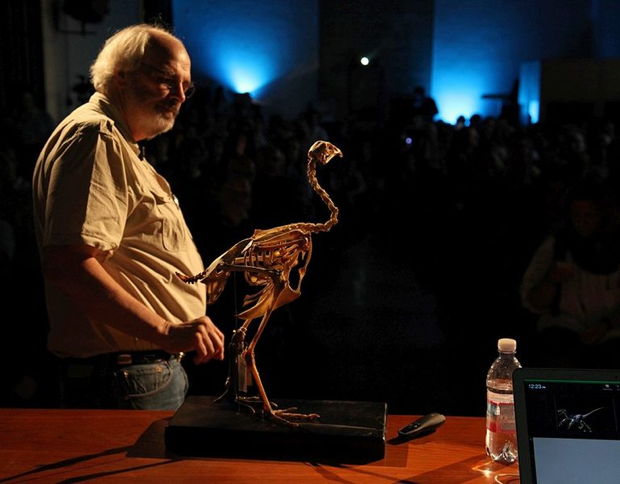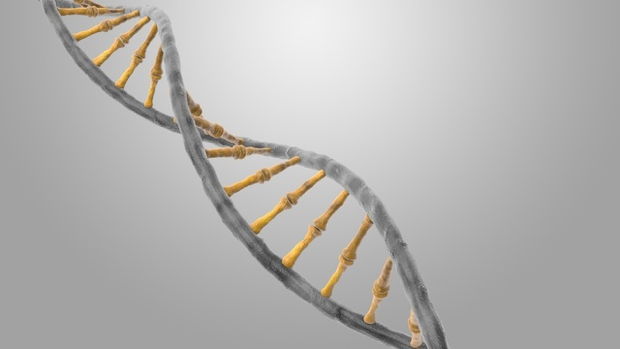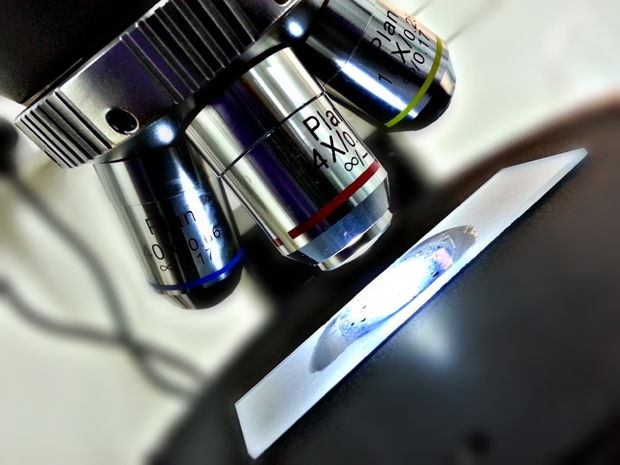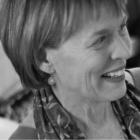I love that you are a Christian and work in paleontology. How did you end up in the field?
It wasn’t what I planned on — I never planned to be a professional “dinosaur person,” not in a million years.
I was raised Catholic, by far the youngest of three kids. My brother, who was my absolute hero, left home at seventeen, left little bitty Helena, Montana, to study at Catholic University in Washington, DC. This was 1960. Planes barely flew that far. And I missed him. He left when I was five, but before he left, he taught me how to read and wanted to encourage that. So he'd send me books from the Smithsonian. One was a Little Golden Book called Roy Chapman Andrews and the Dinosaurs of the Flaming Cliffs, or something similar, and another is one of my all-time favorites still to this day, The Enormous Egg by Oliver Butterworth. I loved the book then, and when my brother came home for his first Christmas break, I said, "I'm going to grow up to be a paleontologist." I was five.
But, you know, real life intervenes. I got my degree in educational audiology. So I worked with deaf kids in schools, and then I married. I had my three kids, then went back to school, originally in a pre-med program, but then got a second degree in secondary education, broad field science.

Jack Horner with bird skeleton.
One day, shortly after I finished that program, I saw that paleontologist Jack Horner — everyone knew him in Montana — was teaching a class on campus at Montana State. I went to class that first day of the semester and after his introductory lecture, I walked up and said, "Hi, Jack. I am a young earth creationist, and I'm going to convince you you're wrong about evolution. Can I sit in on your class?"
He said, "I'm Jack. I'm an atheist. Have a seat."
And instead of calling me out or making fun of my beliefs, he showed me data. No one had ever shown me data before. Often in the Christian community people aren’t talking about scientific data. Instead, Christians may hear about scientists: "They're evil. They don't believe in God. They're atheists.” But many Christians haven’t heard how much data supports an ancient earth and evolution. Nobody’s told them.
Jack never tried to change my mind about anything. He just said, "Here's the data." And about halfway through that first semester, I began to see that my young earth views could not be supported in light of all the data. I knew God and was not willing to turn away from him. And I began to see that the two weren’t mutually exclusive as I had been taught.
But I think of the Catholic Church as pretty open about the age of the earth?
Actually, the Catholic Church has no issues with an ancient earth. But, I wasn’t in the Catholic Church anymore. In college I ended up getting involved in Young Life. After I had gone to my first meeting, I came home. My mom was at work but my dad was sitting up, waiting for me to come back. And we talked. We talked until midnight about the person Jesus, about what it meant to be a person of faith, what faith meant. And then two days later he died.
Suddenly?
Yes. Two days later. And I think that was the hand of God that I had had that Young Life experience and that talk with my dad, because otherwise, when he was taken from me, I don't think I would've survived. I really don't, certainly not with my faith intact.
I became part of a Christian community that tended to view the Bible apart from its context. I have a high view of Scripture — I think we just have to remember who the Bible is written to, because God reaches us where we are, and where we were two thousand, three thousand years ago as itinerate farmers and sheep herders is very different than where we are now. But that doesn't mean the message changes or the truth changes. But at that time I became convinced that the Bible precluded evolution and an ancient earth, much to my brother's chagrin, because he — a cancer research physician, head of Bay State Medical Center for years — wanted me to go into science.
Okay, so here you are, taking Jack Horner’s class.
No! I was just sitting in on it.
You were just auditing it?
Yes. And I never worked so hard in my life.
You did the work for the class?
I did all the work. Of course. What's the point of going otherwise?
[Laugh]
And he gave me a C. I've never had a C in my life. I was horrified. Even though it wasn't on my transcript. But he made me so mad I said, "I'm going to master this if it's the last thing I do." And it was very, very hard for me. Not the science so much, but just this dueling, this tension. I knew that I was not going to ever throw away God. God was first and foremost. But I also knew that my God wasn't a deceiver. So how do I take what I've been taught in my Christian community and balance it with what science is telling me? I've actually had students in my office struggling with this same thing, saying, "I think I'm going to have to throw away my faith." You know, as Christians, as parents, we do our students a huge disservice if we don’t prepare them to see the scientific data someday — on a whole range of things. We need to help them hang onto their faith and to understand why scientists are saying what they’re saying and that their faith is not incongruent with science. To me it is so exciting to see God revealed through science.

To see something like the beauty of DNA.
And you know, we have a hard time explaining that one. And that's the other thing I really want students to get, is how much we don't know. I teach a class called Evolutionary Transitions. And I look at everything, from the origin of life to the origin of humans. And then we look at extinctions. And we look at the atmosphere, the tectonics, the geology, the water chemistry, and the fossil record, at each one of these major transition points. And what I came away with is, "We know so little. There is so much we don’t know!”
And the danger of thinking you know everything is that it squashes curiosity and discourages further investigation. When I started down this path that I'm on, everybody “knew” organics don't persist in dinosaur bone. The bones are just too old. Organics degrade. You can't get DNA. You can't get cells. You certainly are not going to get cells in tissues. Well, so nobody looks. And if nobody looks...
So how did you find it?
I wasn't looking for it either. I was just doing a volunteer job. When my youngest started kindergarten, I said, "I can volunteer." And so I signed up to do volunteer fossil prep at the museum, which was within walking distance of my house. I was learning how to make microscope slides because if I ever wanted to do any fossil work, it had to be around my kids’ schedule. Going out in the field and digging up a new dinosaur was not an option. So I was learning how to do some of the lab analyses.

I had this dinosaur that had just come out of the field — it was a “fresh” old bone, right out of the ground. As I was preparing it, this fossil had an odor to it. It smelled. It smelled very, very strongly. It smelled like a cadaver — this unique, very sweet odor, decaying, putrid sweet. That's what my dinosaur smelled like. And so I sat there and I thought, "I'm not telling anybody."
And then, as I prepared the bone — the bone is taken out of the sediment, and when it is broken it is cleaned, and then glued back together — the spongy bone, on the inside of the long bones looked like fresh bone. And again I thought, "I'm not telling anybody this." But I was working with a researcher who was showing me how to make thin sections of the bone — thin enough to look through the microscope to see structure — and she took the slides to a conference, where a veterinarian in attendance came up to her and said, "You said those are dinosaur bone, but I see blood cells in the bone." When she got back, she called me in and said, "I think you might need to see this." This was the day after I had submitted my thesis proposal to my committee for a little biomechanics study.
So you were back in school, studying paleontology in graduate school?
Yes. By this time I'd volunteered for a few years, and I kept asking Jack a million questions. And I’m working on this bone for six months, smelling this odor, which means there must be organics present — but of course everyone knew there cannot be organics in bone this old — thinking, "I am not telling a soul." But I finally did. And Jack said, "Mary, just go back to graduate school. I'm tired of answering your questions."
When I saw these little round red things — and of course everyone knew there couldn’t be any soft tissue like blood cells left in fossilized dinosaur bones — it was the day after I presented my thesis proposal to my committee. And I was actually planning to do some research on my own before I told Jack about them. But one of my fellow graduate students called him up in the middle of the night, saying, "You're not going to believe what Mary has! You're not going to believe this!" So he called me into the office, and he was furious. Absolutely furious. Furious that, number one, I hadn't told him. But number two, that I had taken these fragments of bone and tried to learn how to do this without getting his permission.
And when I finally got into his office, he stared at that microscope and didn't say a word. And by now, I am sweating bullets. He's already mad at me. I'm hopelessly insecure. And so he gets up, and he says, "What do you think they are?" And I said, "Well, I know they can't be blood cells, but they're in the right place, the right location, the right size, and they're nucleated." He said, "So? Prove to me they're not."
And that sentence has dictated how I approach science. It wasn't my job to prove they were blood cells. Science cannot prove anything. It can disprove or it can support, and when something is supported over and over and over, it becomes accepted. But that isn’t proof...and you have to allow that there may be one more datum, one more experiment, that might just disprove it all. This way of thinking removes bias from experiments. If you're seriously trying to disprove your pet hypothesis, you do a lot better science. And you don't overstate your data because you know you might have to swallow your own words.
Jack gave me very good advice. And so that's what I set out to do: prove they were not red blood cells.







